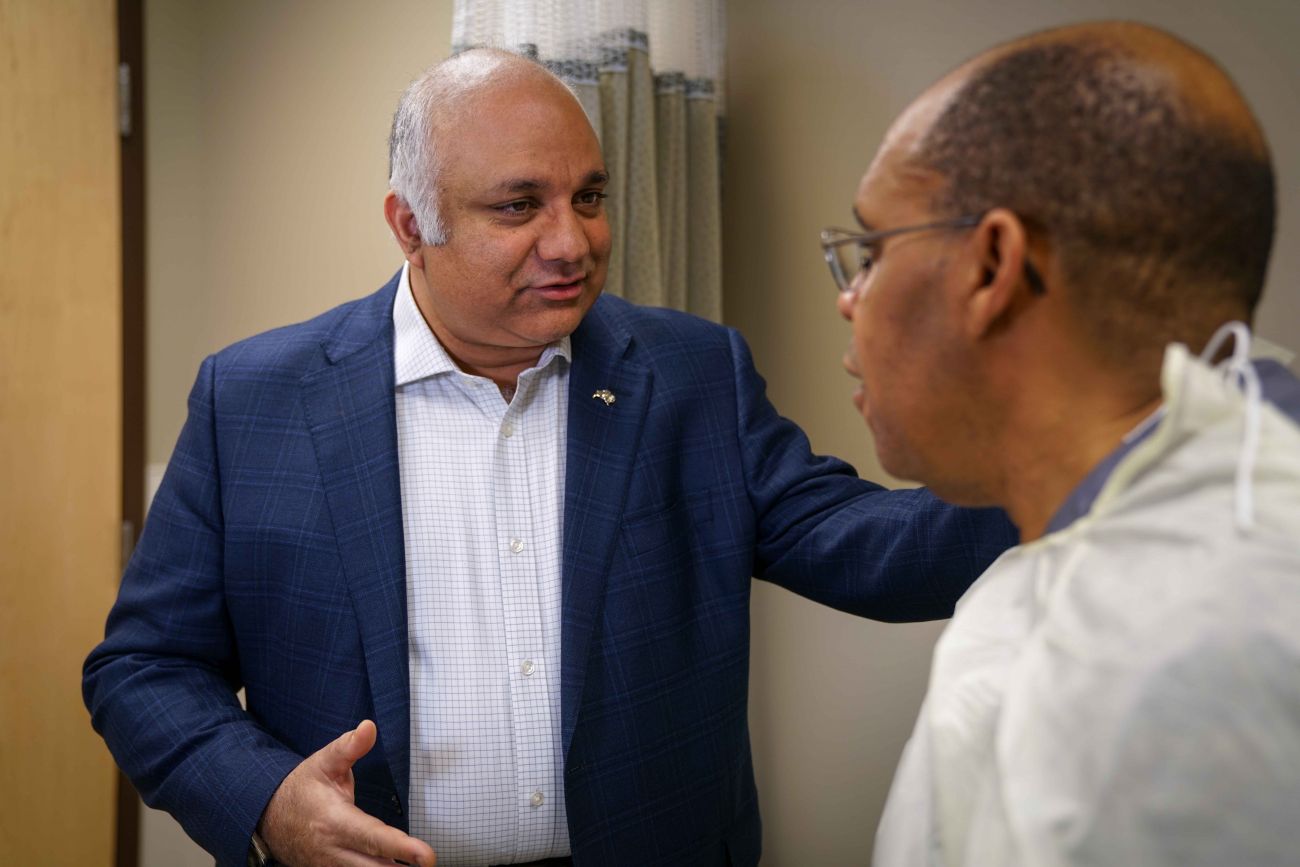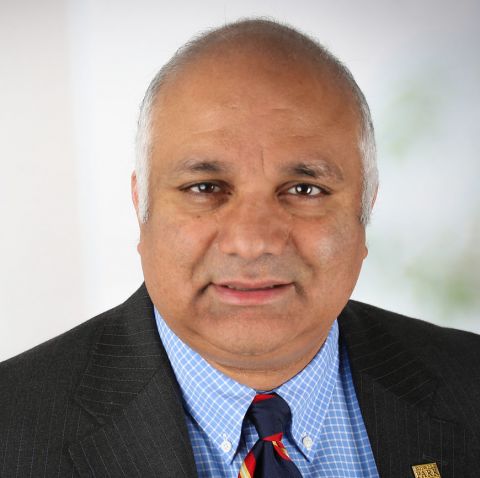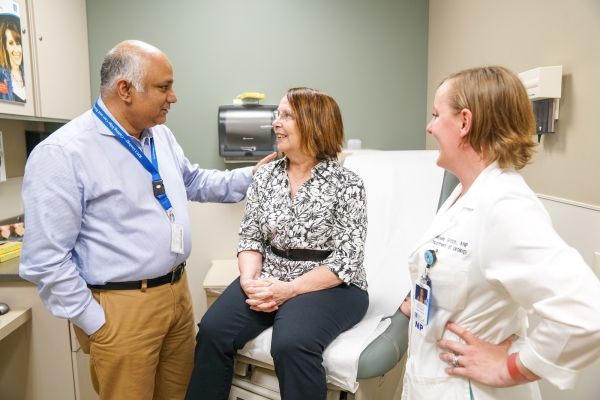When a patient with bladder cancer undergoes a radical cystectomy (removal of the entire bladder), the surgeon needs to create a system that can take over the work of the missing bladder. Some patients have the option of a neobladder. (“Neo” is the Latin word for “new.) A neobladder helps many patients maintain a high quality of life by replacing the bladder with something that is very close to the real thing.
To understand what a neobladder is and how it works, here’s a crash course on your urinary system. It includes:
- Two kidneys, which create urine to help remove waste from your body;
- Two ureters, the tubes that carry the urine from the two kidneys to the bladder;
- A bladder, where the urine is stored until the bladder is full and you urinate; and
- A urethra, the tube that carries urine from the bladder to the opening where it comes out of your body
Creating a New Pathway for Urine
Before a cystectomy, urine flows into the bladder and then out through the urethra. If the cancer is close to the urethra, however, the urethra will no longer be available as an exit for the urine, so the surgeon needs to create a detour.
In those cases, the surgeon will create a stoma, a small, permanent opening in the abdomen where urine will flow out of the body.
- With a urostomy or ileal conduit, the surgeon uses part of the small intestine to create a tube that carries urine out through the stoma. The urine collects in a soft plastic pouch that’s attached to the outside of the body. The bag must be emptied every four to six hours.
- With the Indiana pouch system, the surgeon uses a portion of the small intestine to collect urine inside the body, and connects it to the stoma. The bag must be emptied every four to six hours by inserting a tube called a catheter into the stoma to drain the urine.
A Patient's Guide to Bladder Cancer
Dr. Guru is the Chair of Urology and the Director of Robotic Surgery at Roswell Park. He recently authored a book for bladder cancer patients and their families titled "A Patient's Guide to Bladder Cancer."
What is a Neobladder?
Between 15-25% of cystectomy patients at Roswell Park have a third option — a neobladder. When surgery does not affect the urethra, the surgeon can use part of the small intestine to create a pouch to collect urine inside the body. Unlike the Indiana pouch system, however, the neobladder is connected to the urethra, so there’s no need for a stoma or external collection pouch. Urine will come out through the urethra as it did before the cystectomy.
While a neobladder works in much the same way as a normal bladder, there are some differences. When a regular bladder fills with urine, you get a sensation that you need to urinate. The neobladder is made of tissue from the intestines, so it doesn’t contain the nerves that alert you to a full bladder. It gives you a different feeling of fullness, similar to what you feel after eating a big meal.
Cystectomy patients can train themselves to recognize that feeling and empty the neobladder when it’s full. This is done by pushing on the abdominal wall — bearing down, as you would during a bowel movement — to release the urine.
Is a Neobladder an Option for Me?
A neobladder may be an option if:
- Your kidneys are working well.
- The tumor is not near the urethra, so the urethra can stay in place.
- You’re physically fit and able to get out of bed by yourself. This is important because you may leak urine when you are sleeping if the feeling of fullness doesn’t wake you up.
- You are able to use a catheter to empty your neobladder if necessary. This may be necessary if you find it hard to urinate normally. When that happens, you will need to insert a catheter (tube) into the urethra to release the urine from your neobladder. (This happens in a small number of people who have a neobladder.)
If you meet these criteria and are motivated to learn how to use a neobladder, it could be a very satisfactory system for you after cystectomy. Your urologic oncologist can answer your questions and discuss your options with you in detail.


